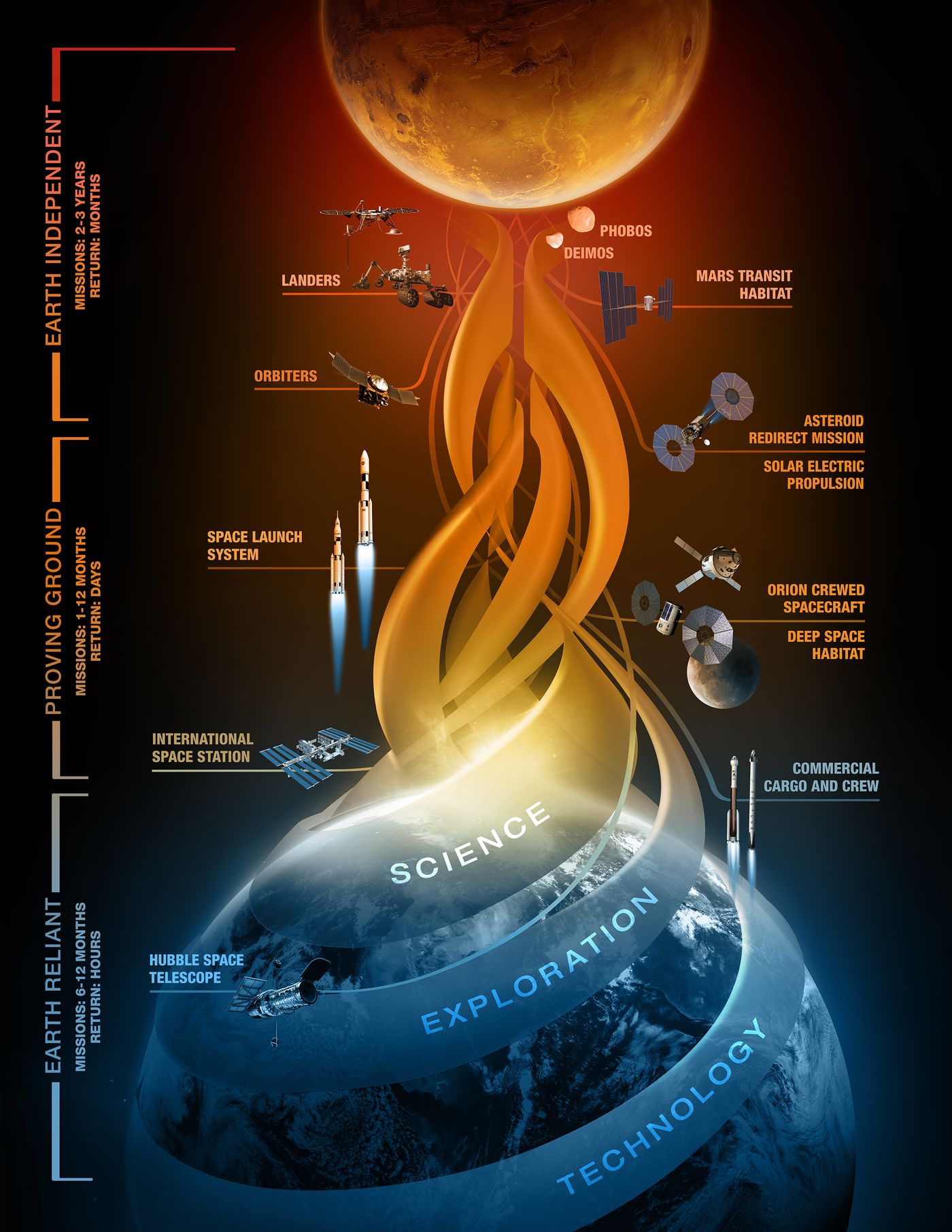NASA Reveals Plans for Sending Astronauts to Mars
Mankind has been considering the idea of putting astronauts on Mars for the longest time, but this week, NASA has officially announced its interest in putting people on Mars to live there with the help of other space agencies around the world.

As revealed in a recent video we shared, it would be no easy task to put astronauts on Mars and keep them there. It would be difficult to re-supply the astronauts with necessities, such as food, because at times, Mars can get far away from Earth as it orbits the Sun and it would take months to get supplies from Earth to Mars.
Nonetheless, NASA is confident that we’re closer than ever before to putting people on Mars.
“NASA is closer to sending American astronauts to Mars than at any point in our history,” said NASA Administrator Charles Bolden. “Today, we are publishing additional details about our journey to Mars plan and how we are aligning all of our work in support of this goal. In the coming weeks, I look forward to continuing to discuss the details of our plan with members of Congress, as well as our commercial and our international and partners, many of whom will be attending the International Astronautical Congress next week.”
First the space agency will have to push their plans through Congress, where it can get approved. Future meetings and discussions will take care of that. The idea is to break three boundaries that have kept mankind on Earth since the dawn of man; those are:
- Earth Reliance
- Proving Ground
- Earth Independence

Earth reliance, as NASA explains, is being dealt with via the International Space Station, which helps astronauts prepare for long space exploration trips by getting used to being away from home for long periods of time and living in a microgravity environment. This includes research that helps astronauts keep their health in order while in space, such as the constant exercise that is required in space to keep muscles from deteriorating due to the lack of having to fight gravity.
NASA also wants to work on something called a Proving Ground, which are essentially test missions that will send astronauts to deep space environments, such as Mars, where they can return to Earth in just a few days. This testing will allow astronauts to, in a way, beta test what it’s like to land on another planet and whether or not it will be feasible. This will also train astronauts in a real environment where they can learn to cope with living on the Martian surface.
The last thing, Earth Independence, is something that NASA says will involve building on humanity’s expansion past Earth. The idea is to get astronauts physically able to survive on the surface of another planet where it will be possible to continue searching for life in a much more detailed manner, all while trying to keep them from having to rely so heavily on those back here on Earth. This will be the final step in the mission to Mars.
Starting with landings on bodies near Mars, such as Moons, NASA hopes to expand its horizons to further deep space missions in the future. NASA will use information that it has collected from near-Earth space missions, such as those to the International Space Station and our own Moon to conduct these missions. After these landings are successful, NASA would like to eventually work its way to the Martian surface.
“NASA’s strategy connects near-term activities and capability development to the journey to Mars and a future with a sustainable human presence in deep space,” said William Gerstenmaier, associate administrator for Human Exploration and Operations at NASA Headquarters. “This strategy charts a course toward horizon goals, while delivering near-term benefits, and defining a resilient architecture that can accommodate budgetary changes, political priorities, new scientific discoveries, technological breakthroughs, and evolving partnerships.”
NASA is well aware of the risks involved, such as whether or not the astronauts will actually be able to make it on Mars in the harsh environment, or even the transportation to Mars itself. But many risks will be mitigated thanks to all of the years of research and development that the space agency has worked on. For example, NASA has been sending robots and rovers to Mars for over 40 years, and in doing so, we’ve learned much about the planet that will help ensure the safety of any astronauts to visit the red planet.
It is believed that advancements in space technology over the last several years, as well as advancements to come, will help astronauts make a good impression on the Martian surface. For example, recent interest in creating a solar-powered electric propulsion rocket that can re-direct the trajectory of an asteroid would help NASA learn about the capabilities and reliability of such a technology in long-distance travel, such as that to Mars.
It may be a while (decades) before astronauts actually get to Mars, since there are still a lot of things to consider, test, and develop technology for, but this announcement marks the preliminary steps of starting another “small step for man” that will be a “leap for mankind,” as American astronaut Neil Armstrong famously said during his first steps on the Moon in 1969.
Source: NASA








